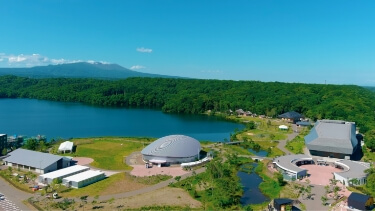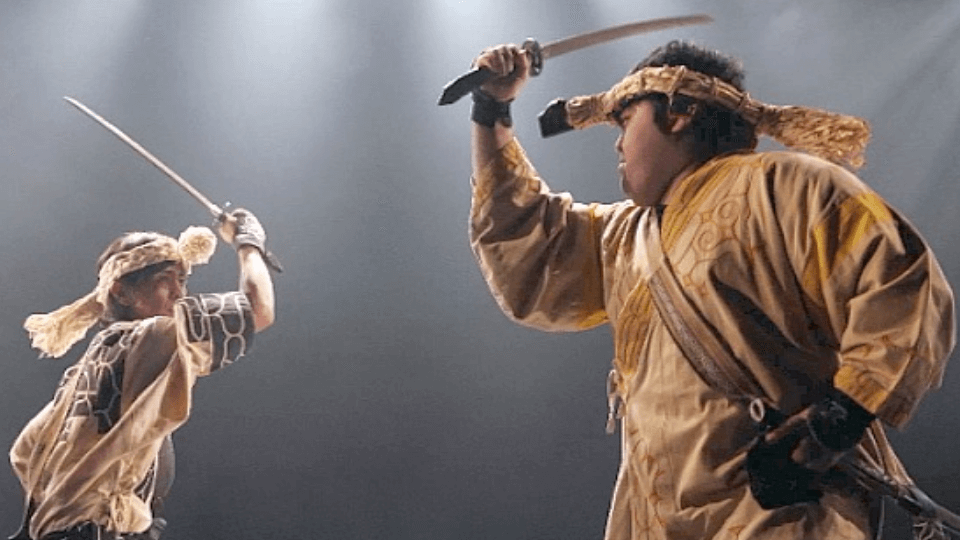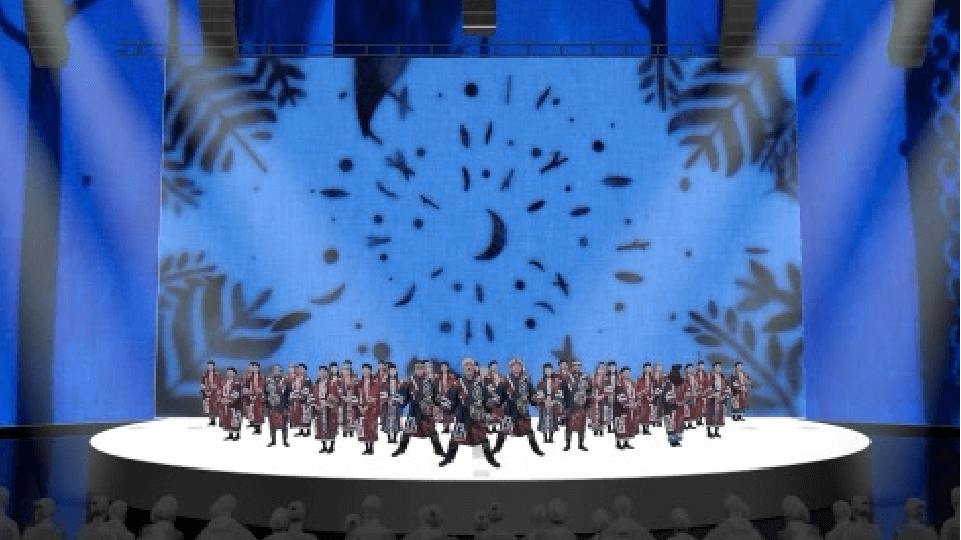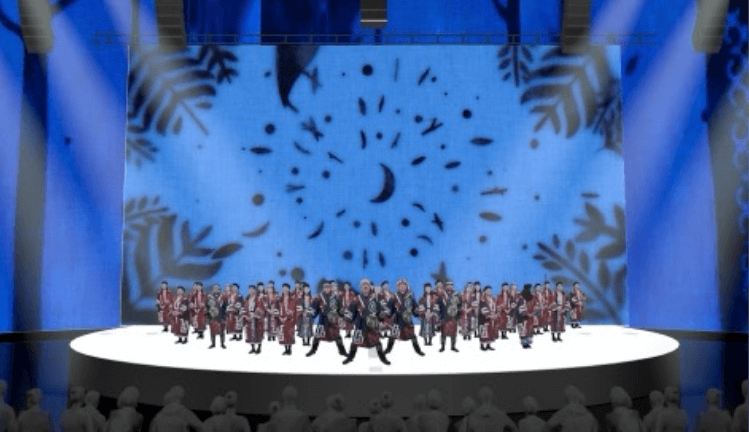Thank you very much for your visit.
The exhibition and demonstration of traditional crafts and sales of handmade items have now concluded.
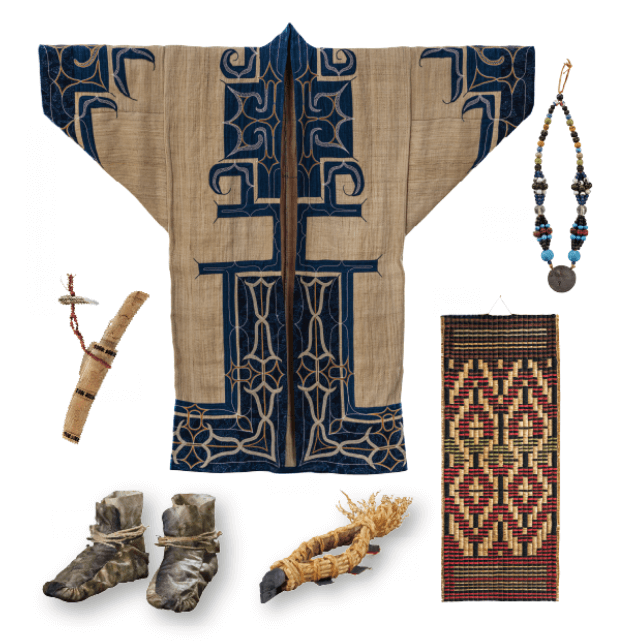
EXPO 2025 Osaka, Kansai, Japan
irankarapte
― Ainu Culture from Upopoy ―
No reservations required
June 10 (Tue) – 12 (Thu), 2025
- 10 (Tue)
- 1pm – 9pm
- 11 (Wed)
- 9am – 9pm
- 12 (Thu)
- 9am – 5pm
Welcome to our exhibition
Kohei Fujito, an artist from Lake Akan, Hokkaido, invites visitors to experience Ainu culture with an installation he created for EXPO 2025 Osaka, Kansai, Japan.
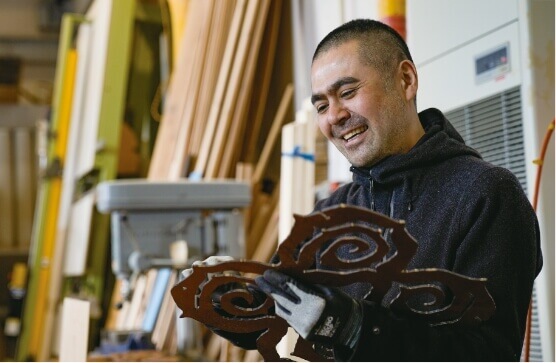
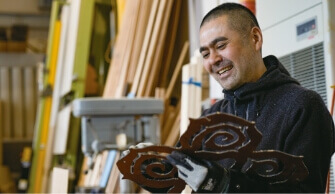
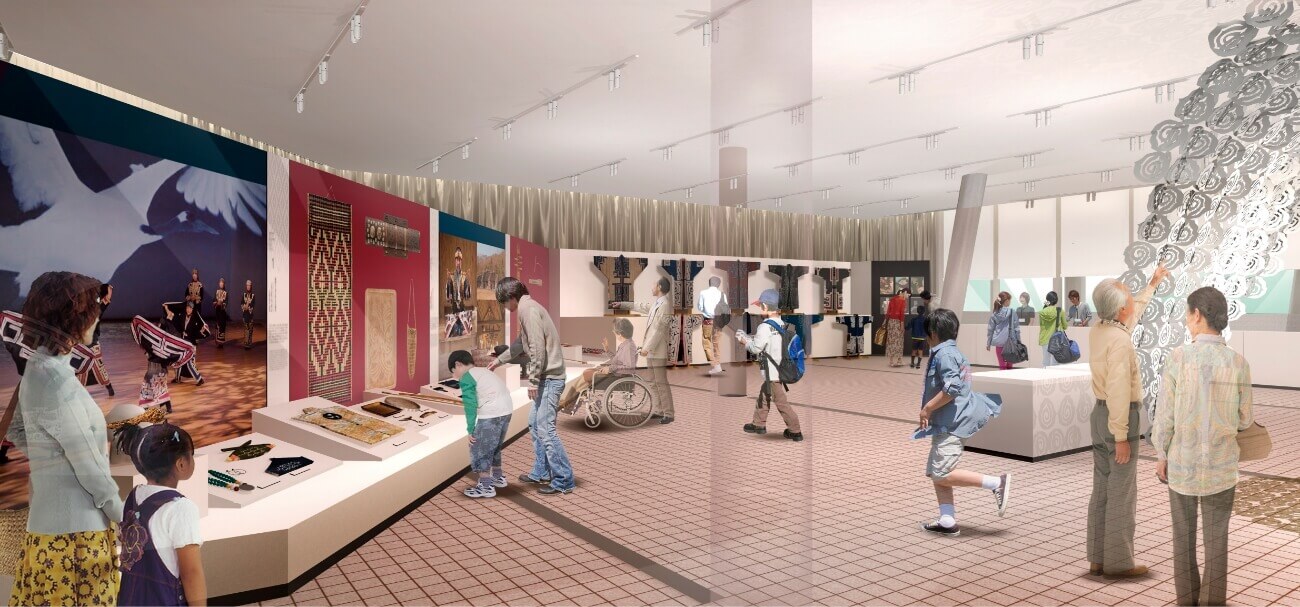
Crafts exhibition
At the exhibition, experience Ainu culture with an introduction to Upopoy, various crafts replicated by Upopoy staff using traditional techniques, and displays of clothing created by Ainu cultural practitioners from across Hokkaido.

Demonstrations by Ainu crafts artists
Discover the intricate beauty of Ainu crafts as you speak with the artists and watch them at work.
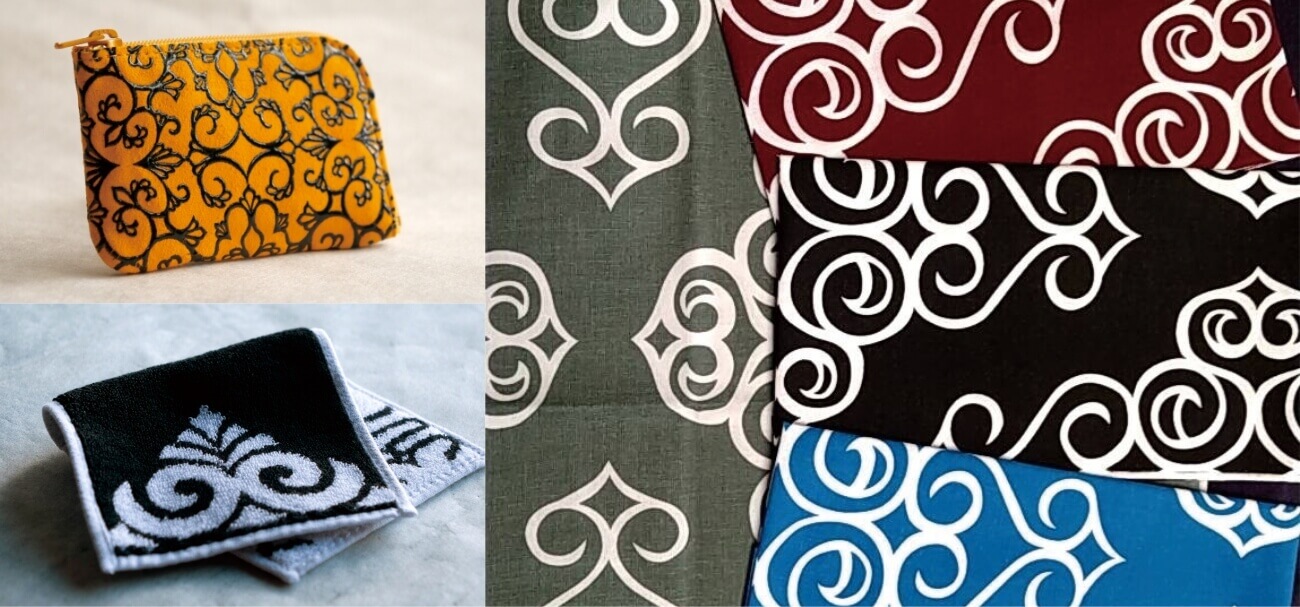
Ainu crafts shop
Browse a wide range of products created by artists from Hokkaido, including Nibutani ita (wooden platter), attus (wood fiber textile) woven accessories, and tapestries and handkerchiefs designed with Ainu patterns, and more.
The performance has ended.
Thank you very much!
EXPO 2025 Osaka, Kansai, Japan
The Performing Arts of the Ainu
Urespa Mosir
“Urespa mosir” means the world where all nurture each other and represents our Ainu philosophy that the world
exists through mutual nurturing and support among not only humans but all things. We pass down this worldview,
hoping that people around the world will join hands together. Humans, animals, plants, and tools—all come into
this world with a purpose when placed upon this earth.
We, the Ainu, pray, sing, and dance in hopes that our hearts will connect with yours.
May 17, 2025 (Sat.)

1st stage 1:00pm|2nd stage 3:30pm|3rd stage 5:40pm
1st stage 1:00pm
2nd stage 3:30pm
3rd stage
5:40pm
Stage Schedule
May 17, 2025 (Sat.)
EXPO Hall “Shining Hat”
1st stage
The Performing Arts of the AinuIrankarapte
- 1:00pm
- Doors open
- 1:30pm
- Opening Ceremony
- 1:55pm
- Performance (approx. 70 min.)
[Central and Northern Hokkaido]
Sapporo Upopo Preservation Society, The Chitose Society of Traditional Ainu Culture Preservation, Asahikawa Chikappuni Ainu Culture Preservation Society, Tomakomai Ainu Culture Preservation Society, Ainu Art Project, and more
Detail of Program
Tonoto soropa (sake straining song)
The sake that is an essential part of many rituals is traditionally made by women using grains such as rice, Japanese barnyard millet or foxtail millet, together with koji mold. While straining the sake, people gather around the sintoko (a covered lacquerware container) to enjoy singing and dancing.
Sintoko sanke (sake barrel opening)
Two people sitting facing each other on either side of the sintoko (a covered lacquerware container) have the important role of watching over the sake. They open the sintoko lid and draw out sake from within to mark the start of the ritual.
Kamuynomi (ritual)
Elements that contribute to people’s lives or possess power beyond that of humans, including animals, plants, natural phenomena, diseases and tools, have been treated as spirit deities. Rituals are held to pray to these deities in order to ensure villages’ safety, express gratitude in various everyday situations or to send messages.
Tapkar (dance)
In this dance performed at the start of a banquet, men exhibit powerful movements and calls using the throat muscles to welcome important guests and the spirit deities. The way each performer uses their voice and body movements brings out their unique personality.
Upopo (seated singing)
Songs mixing falsetto and exhaling sounds, with the lid of the sintoko (a covered lacquerware container) used to keep the beat.
Horippa (circle dance)
As the banquet gets into full swing, the participants stand up and dance in a circle.
Takusa rimse (purification dance)
Striking the ground or inside of a home with a takusa, a ritual staff with bamboo attached to the top, is believed to purify the space. This dance expels evil spirits at the start of a ritual or festival.
Uekap (greeting dance)
A dance in which people who have not met for some time hold hands and express joy at finding each other in good health.
Cironnup rimse (fox dance)
This dance tells the tale of a fox too busy playing and admiring its own tail to notice a hunter. When the fox is struck with an arrow, the hunter shows it due reverence, then receives its fur and meat.
Ku rimse (bow and arrow dance)
A dance telling the story of a hunter who finds a bird in the hills, but hesitates to shoot because of its beauty, ultimately missing their chance to strike. This dance dedicated to spirit deities is performed at festivals and during iyomante, a ceremony in which a bear is sacrificed and sent back to the world of the spirit deities.
Poncikap rimse (small bird dance)
One of several bird-inspired dances that have been passed down in various regions of Hokkaido. Dancers imitate small birds gathering together, mimicking each other’s movements as they do so.
Mukkuri (mouth harp) Tonkori (zither)
Mukkuri: A type of mouth harp that creates sound with a small valve that resonates in the mouth.
Tonkori: A traditional stringed instrument from the island of Sakhalin played with open strings and capable of creating various sounds.
Cikap upopo (crane dance)
One of several bird-inspired dances that have been passed down in various regions of Hokkaido. This dance expresses parental love through the representation of adult cranes showing their young how to fly, then taking to the sky as a family.
Battaki upopo (grasshopper dance)
Dancers move their hands and feet together in grasshopper-like movements in a dance made to be enjoyed by women and children.
Huttare cuy (black-hair dance)
A dance in which black-haired dancers represent pine trees bending in the wind on the night of a great storm. It is also known as “a dance of competing heart rates,” in reference to the vigorous movements.
Emus rimse (sword dance)
An iconic male dance to ward off evil spirits and disasters. Swords are believed to have spiritual power and the ability to expel malevolent forces, and this dance dedicated to spirit deities is performed during festivals and iyomante, a ceremony in which a bear is sacrificed and sent back to the world of the spirit deities.
Sikari upopo (circle dance)
Several songs are sung one after another, with the dance changing to reflect the previous song. Circle dances begin at the climax of iyomante, a ceremony in which a bear is sacrificed and sent back to the world of the spirit deities, and banquets.
2nd stage
The Performing Arts of the AinuKanto or wa yaku sak no a=ranke p sine p ka isam
- 3:30pm
- Doors open
- 4:00pm
- Performance (approx. 70 min.)
[Southern Hokkaido]
Shiraoi Ainu Performing Arts Preservation Society, Niikappu Ainu Culture Preservation Society, Urakawa Ainu Culture Preservation Society, Samani Ainu Culture Preservation Society, Yakumo Yurappu Hanchikapu Group, Erimo Traditional Dance Group, and more
Detail of Program
Tonoto soropa (sake straining song)
The sake that is an essential part of many rituals is traditionally made by women using grains such as rice, Japanese barnyard millet or foxtail millet, together with koji mold. While straining the sake, people gather around the sintoko (a covered lacquerware container) to enjoy singing and dancing.
Sintoko sanke (sake barrel opening)
Two people sitting facing each other on either side of the sintoko (a covered lacquerware container) have the important role of watching over the sake. They open the sintoko lid and draw out sake from within to mark the start of the ritual.
Kamuynomi (ritual)
Elements that contribute to people’s lives or possess power beyond that of humans, including animals, plants, natural phenomena, diseases and tools, have been treated as spirit deities. Rituals are held to pray to these deities in order to ensure villages’ safety, express gratitude in various everyday situations or to send messages.
Tapkar (dance)
In this dance performed at the start of a banquet, men exhibit powerful movements and calls using the throat muscles to welcome important guests and the spirit deities. The way each performer uses their voice and body movements brings out their unique personality.
Upopo (seated singing)
Songs mixing falsetto and exhaling sounds, with the lid of the sintoko (a covered lacquerware container) used to keep the beat.
Utare Opunparewa (circle dance)
As the banquet gets into full swing, the participants stand up and dance in a circle.
Takusa rimse (purification dance)
Striking the ground or inside of a home with a takusa, a ritual staff with bamboo attached to the top, is believed to purify the space. This dance expels evil spirits at the start of a ritual or festival.
Skata kuykuy (east wind dance)
A dance representing the branches of Sakhalin fir trees bending under snowfall, causing the snow to fall to the ground.
Cironnup rimse (fox dance)
This dance tells the tale of a fox too busy playing and admiring its own tail to notice a hunter. When the fox is struck with an arrow, the hunter shows it due reverence, then receives its fur and meat.
Ku rimse (bow and arrow dance)
A dance telling the story of a hunter who finds a bird in the hills, but hesitates to shoot because of its beauty, ultimately missing their chance to strike. This dance dedicated to spirit deities is performed at festivals and during iyomante, a ceremony in which a bear is sacrificed and sent back to the world of the spirit deities.
Saroruncikap rimse (crane dance)
One of several bird-inspired dances that have been passed down in various regions of Hokkaido. This dance expresses parental love through the representation of adult cranes showing their young how to fly, then taking to the sky as a family.
Mukkuri (mouth harp) Tonkori (zither)
Mukkuri: A type of mouth harp that creates sound with a small valve that resonates in the mouth.
Tonkori: A traditional stringed instrument from the island of Sakhalin played with open strings and capable of creating various sounds.
Aranpe rimse (fog-warding dance)
This dance expresses a prayer to keep fog away when crossing the hills to a neighboring village.
Battaki upopo (grasshopper dance)
Dancers move their hands and feet together in grasshopper-like movements in a dance made to be enjoyed by women and children.
Huttare cuy (black-hair dance)
A dance in which black-haired dancers represent pine trees bending in the wind on the night of a great storm. It is also known as “a dance of competing heart rates,” in reference to the vigorous movements.
Emus rimse (sword dance)
An iconic male dance to ward off evil spirits and disasters. Swords are believed to have spiritual power and the ability to expel malevolent forces, and this dance dedicated to spirit deities is performed during festivals and iyomante, a ceremony in which a bear is sacrificed and sent back to the world of the spirit deities.
Iyomante rimse (bear spirit-sending dance)
Several songs are sung one after another, with the dance changing to reflect the previous song. Circle dances begin at the climax of iyomante, a ceremony in which a bear is sacrificed and sent back to the world of the spirit deities, and banquets.
3rd stage
The Performing Arts of the AinuUrespa mosir
- 5:40pm
- Doors open
- 6:10pm
- Performance (approx. 70 min.)
[Eastern Hokkaido & Kanto]
Akan Ainu Culture Preservation Society, Obihiro Kamuitou Upopo Preservation Society, Shiranuka Ainu Culture Preservation Society, nincup, Kanto Utari Association, Rera-no-Kai (Rera Club), Harutori Traditional Ainu Dance Kushiro Rimuse Preservation Society, Peure Utari Society, and more
Detail of Program
Tonoto soropa (sake straining song)
The sake that is an essential part of many rituals is traditionally made by women using grains such as rice, Japanese barnyard millet or foxtail millet, together with koji mold. While straining the sake, people gather around the sintoko (a covered lacquerware container) to enjoy singing and dancing.
Sintoko sanke (sake barrel opening)
Two people sitting facing each other on either side of the sintoko (a covered lacquerware container) have the important role of watching over the sake. They open the sintoko lid and draw out sake from within to mark the start of the ritual.
Kamuynomi (ritual)
Elements that contribute to people’s lives or possess power beyond that of humans, including animals, plants, natural phenomena, diseases and tools, have been treated as spirit deities. Rituals are held to pray to these deities in order to ensure villages’ safety, express gratitude in various everyday situations or to send messages.
Tapkar (dance)
In this dance performed at the start of a banquet, men exhibit powerful movements and calls using the throat muscles to welcome important guests and the spirit deities. The way each performer uses their voice and body movements brings out their unique personality.
Upopo (seated singing)
Songs mixing falsetto and exhaling sounds, with the lid of the sintoko (a covered lacquerware container) used to keep the beat.
Utare Opunparewa (circle dance)
As the banquet gets into full swing, the participants stand up and dance in a circle.
Takusa rimse (purification dance)
Striking the ground or inside of a home with a takusa, a ritual staff with bamboo attached to the top, is believed to purify the space. This dance expels evil spirits at the start of a ritual or festival.
Eri rimse (millet sowing dance)
Prayers for a plentiful and joyous harvest are expressed through a dance representing the farming process, from sowing seeds and applying topsoil to harvesting. This is also known as a millet sowing dance.
Cironnup rimse (fox dance)
A female hunter shoots a fox that underestimates her because she is a woman. This dance teaches the importance of treating women and children with respect.
Ku rimse (bow and arrow dance)
A dance telling the story of a hunter who finds a bird in the hills, but hesitates to shoot because of its beauty, ultimately missing their chance to strike. This dance dedicated to spirit deities is performed at festivals and during iyomante, a ceremony in which a bear is sacrificed and sent back to the world of the spirit deities.
Sarorunkamuy rimse(crane dance)
One of several bird-inspired dances that have been passed down in various regions of Hokkaido. This dance expresses parental love through the image of adult cranes showing their young how to fly, then taking to the sky as a family.
Mukkuri (mouth harp) Tonkori (zither)
Mukkuri: A type of mouth harp that creates sound with a small valve that resonates in the mouth.
Tonkori: A traditional stringed instrument from the island of Sakhalin played with open strings and capable of creating various sounds.
Humpe rimse (whale dance)
This dance tells the story of a crow that finds a beach whale and shares its good fortune with people, allowing them to overcome a famine.
Battaki upopo (grasshopper dance)
Dancers move their hands and feet together in grasshopper-like movements in a dance made to be enjoyed by women and children.
Huttare cuy (black-hair dance)
A dance in which black-haired dancers represent pine trees bending in the wind on the night of a great storm. It is also known as “a dance of competing heart rates,” in reference to the vigorous movements.
Emus rimse (sword dance)
An iconic male dance to ward off evil spirits and disasters. Swords are believed to have spiritual power and the ability to expel malevolent forces, and this dance dedicated to spirit deities is performed during festivals and iyomante, a ceremony in which a bear is sacrificed and sent back to the world of the spirit deities.
Poro rimse (circle dance)
Several songs are sung one after another, with the dance changing to reflect the previous song. Circle dances begin at the climax of iyomante, a ceremony in which a bear is sacrificed and sent back to the world of the spirit deities, and banquets.


Detail of Program
1st stage
Central and Northern Hokkaido2nd stage
Southern Hokkaido3rd stage
Eastern Hokkaido and KantoTonoto soropa (sake straining song)
The sake that is an essential part of many rituals is traditionally made by women using grains such as rice, Japanese barnyard millet or foxtail millet, together with koji mold. While straining the sake, people gather around the sintoko (a covered lacquerware container) to enjoy singing and dancing.
Tonoto soropa (sake straining song)
The sake that is an essential part of many rituals is traditionally made by women using grains such as rice, Japanese barnyard millet or foxtail millet, together with koji mold. While straining the sake, people gather around the sintoko (a covered lacquerware container) to enjoy singing and dancing.
Tonoto soropa (sake straining song)
The sake that is an essential part of many rituals is traditionally made by women using grains such as rice, Japanese barnyard millet or foxtail millet, together with koji mold. While straining the sake, people gather around the sintoko (a covered lacquerware container) to enjoy singing and dancing.
Sintoko sanke (sake barrel opening)
Two people sitting facing each other on either side of the sintoko (a covered lacquerware container) have the important role of watching over the sake. They open the sintoko lid and draw out sake from within to mark the start of the ritual.
Sintoko sanke (sake barrel opening)
Two people sitting facing each other on either side of the sintoko (a covered lacquerware container) have the important role of watching over the sake. They open the sintoko lid and draw out sake from within to mark the start of the ritual.
Sintoko sanke (sake barrel opening)
Two people sitting facing each other on either side of the sintoko (a covered lacquerware container) have the important role of watching over the sake. They open the sintoko lid and draw out sake from within to mark the start of the ritual.
Kamuynomi (ritual)
Elements that contribute to people’s lives or possess power beyond that of humans, including animals, plants, natural phenomena, diseases and tools, have been treated as spirit deities. Rituals are held to pray to these deities in order to ensure villages’ safety, express gratitude in various everyday situations or to send messages.
Kamuynomi (ritual)
Elements that contribute to people’s lives or possess power beyond that of humans, including animals, plants, natural phenomena, diseases and tools, have been treated as spirit deities. Rituals are held to pray to these deities in order to ensure villages’ safety, express gratitude in various everyday situations or to send messages.
Kamuynomi (ritual)
Elements that contribute to people’s lives or possess power beyond that of humans, including animals, plants, natural phenomena, diseases and tools, have been treated as spirit deities. Rituals are held to pray to these deities in order to ensure villages’ safety, express gratitude in various everyday situations or to send messages.
Tapkar (dance)
In this dance performed at the start of a banquet, men exhibit powerful movements and calls using the throat muscles to welcome important guests and the spirit deities. The way each performer uses their voice and body movements brings out their unique personality.
Tapkar (dance)
In this dance performed at the start of a banquet, men exhibit powerful movements and calls using the throat muscles to welcome important guests and the spirit deities. The way each performer uses their voice and body movements brings out their unique personality.
Tapkar (dance)
In this dance performed at the start of a banquet, men exhibit powerful movements and calls using the throat muscles to welcome important guests and the spirit deities. The way each performer uses their voice and body movements brings out their unique personality.
Upopo (seated singing)
Songs mixing falsetto and exhaling sounds, with the lid of the sintoko (a covered lacquerware container) used to keep the beat.
Upopo (seated singing)
Songs mixing falsetto and exhaling sounds, with the lid of the sintoko (a covered lacquerware container) used to keep the beat.
Upopo (seated singing)
Songs mixing falsetto and exhaling sounds, with the lid of the sintoko (a covered lacquerware container) used to keep the beat.
Horippa (circle dance)
As the banquet gets into full swing, the participants stand up and dance in a circle.
Utare Opunparewa (circle dance)
As the banquet gets into full swing, the participants stand up and dance in a circle.
Utare Opunparewa (circle dance)
As the banquet gets into full swing, the participants stand up and dance in a circle.
Takusa rimse (purification dance)
Striking the ground or inside of a home with a takusa, a ritual staff with bamboo attached to the top, is believed to purify the space. This dance expels evil spirits at the start of a ritual or festival.
Takusa rimse (purification dance)
Striking the ground or inside of a home with a takusa, a ritual staff with bamboo attached to the top, is believed to purify the space. This dance expels evil spirits at the start of a ritual or festival.
Takusa rimse (purification dance)
Striking the ground or inside of a home with a takusa, a ritual staff with bamboo attached to the top, is believed to purify the space. This dance expels evil spirits at the start of a ritual or festival.
Uekap (greeting dance)
A dance in which people who have not met for some time hold hands and express joy at finding each other in good health.
Skata kuykuy (east wind dance)
A dance representing the branches of Sakhalin fir trees bending under snowfall, causing the snow to fall to the ground.
Eri rimse (millet sowing dance)
Prayers for a plentiful and joyous harvest are expressed through a dance representing the farming process, from sowing seeds and applying topsoil to harvesting. This is also known as a millet sowing dance.
Cironnup rimse (fox dance)
This dance tells the tale of a fox too busy playing and admiring its own tail to notice a hunter. When the fox is struck with an arrow, the hunter shows it due reverence, then receives its fur and meat.
Cironnup rimse (fox dance)
This dance tells the tale of a fox too busy playing and admiring its own tail to notice a hunter. When the fox is struck with an arrow, the hunter shows it due reverence, then receives its fur and meat.
Cironnup rimse (fox dance)
A female hunter shoots a fox that underestimates her because she is a woman. This dance teaches the importance of treating women and children with respect.
Ku rimse (bow and arrow dance)
A dance telling the story of a hunter who finds a bird in the hills, but hesitates to shoot because of its beauty, ultimately missing their chance to strike. This dance dedicated to spirit deities is performed at festivals and during iyomante, a ceremony in which a bear is sacrificed and sent back to the world of the spirit deities.
Ku rimse (bow and arrow dance)
A dance telling the story of a hunter who finds a bird in the hills, but hesitates to shoot because of its beauty, ultimately missing their chance to strike. This dance dedicated to spirit deities is performed at festivals and during iyomante, a ceremony in which a bear is sacrificed and sent back to the world of the spirit deities.
Ku rimse (bow and arrow dance)
A dance telling the story of a hunter who finds a bird in the hills, but hesitates to shoot because of its beauty, ultimately missing their chance to strike. This dance dedicated to spirit deities is performed at festivals and during iyomante, a ceremony in which a bear is sacrificed and sent back to the world of the spirit deities.
Poncikap rimse (small bird dance)
One of several bird-inspired dances that have been passed down in various regions of Hokkaido. Dancers imitate small birds gathering together, mimicking each other’s movements as they do so.
Saroruncikap rimse (crane dance)
One of several bird-inspired dances that have been passed down in various regions of Hokkaido. This dance expresses parental love through the representation of adult cranes showing their young how to fly, then taking to the sky as a family.
Sarorunkamuy rimse(crane dance)
One of several bird-inspired dances that have been passed down in various regions of Hokkaido. This dance expresses parental love through the image of adult cranes showing their young how to fly, then taking to the sky as a family.
Mukkuri (mouth harp) Tonkori (zither)
Mukkuri: A type of mouth harp that creates sound with a small valve that resonates in the mouth.
Tonkori: A traditional stringed instrument from the island of Sakhalin played with open strings and capable of creating various sounds.
Mukkuri (mouth harp) Tonkori (zither)
Mukkuri: A type of mouth harp that creates sound with a small valve that resonates in the mouth.
Tonkori: A traditional stringed instrument from the island of Sakhalin played with open strings and capable of creating various sounds.
Mukkuri (mouth harp) Tonkori (zither)
Mukkuri: A type of mouth harp that creates sound with a small valve that resonates in the mouth.
Tonkori: A traditional stringed instrument from the island of Sakhalin played with open strings and capable of creating various sounds.
Cikap upopo (crane dance)
One of several bird-inspired dances that have been passed down in various regions of Hokkaido. This dance expresses parental love through the representation of adult cranes showing their young how to fly, then taking to the sky as a family.
Aranpe rimse (fog-warding dance)
This dance expresses a prayer to keep fog away when crossing the hills to a neighboring village.
Humpe rimse (whale dance)
This dance tells the story of a crow that finds a beach whale and shares its good fortune with people, allowing them to overcome a famine.
Battaki upopo (grasshopper dance)
Dancers move their hands and feet together in grasshopper-like movements in a dance made to be enjoyed by women and children.
Battaki upopo (grasshopper dance)
Dancers move their hands and feet together in grasshopper-like movements in a dance made to be enjoyed by women and children.
Battaki upopo (grasshopper dance)
Dancers move their hands and feet together in grasshopper-like movements in a dance made to be enjoyed by women and children.
Huttare cuy (black-hair dance)
A dance in which black-haired dancers represent pine trees bending in the wind on the night of a great storm. It is also known as “a dance of competing heart rates,” in reference to the vigorous movements.
Huttare cuy (black-hair dance)
A dance in which black-haired dancers represent pine trees bending in the wind on the night of a great storm. It is also known as “a dance of competing heart rates,” in reference to the vigorous movements.
Huttare cuy (black-hair dance)
A dance in which black-haired dancers represent pine trees bending in the wind on the night of a great storm. It is also known as “a dance of competing heart rates,” in reference to the vigorous movements.
Emus rimse (sword dance)
An iconic male dance to ward off evil spirits and disasters. Swords are believed to have spiritual power and the ability to expel malevolent forces, and this dance dedicated to spirit deities is performed during festivals and iyomante, a ceremony in which a bear is sacrificed and sent back to the world of the spirit deities.
Emus rimse (sword dance)
An iconic male dance to ward off evil spirits and disasters. Swords are believed to have spiritual power and the ability to expel malevolent forces, and this dance dedicated to spirit deities is performed during festivals and iyomante, a ceremony in which a bear is sacrificed and sent back to the world of the spirit deities.
Emus rimse (sword dance)
An iconic male dance to ward off evil spirits and disasters. Swords are believed to have spiritual power and the ability to expel malevolent forces, and this dance dedicated to spirit deities is performed during festivals and iyomante, a ceremony in which a bear is sacrificed and sent back to the world of the spirit deities.
Sikari upopo (circle dance)
Several songs are sung one after another, with the dance changing to reflect the previous song. Circle dances begin at the climax of iyomante, a ceremony in which a bear is sacrificed and sent back to the world of the spirit deities, and banquets.
Iyomante rimse (bear spirit-sending dance)
Several songs are sung one after another, with the dance changing to reflect the previous song. Circle dances begin at the climax of iyomante, a ceremony in which a bear is sacrificed and sent back to the world of the spirit deities, and banquets.
Poro rimse (circle dance)
Several songs are sung one after another, with the dance changing to reflect the previous song. Circle dances begin at the climax of iyomante, a ceremony in which a bear is sacrificed and sent back to the world of the spirit deities, and banquets.
The Chitose Society of Traditional Ainu Culture Preservation
Asahikawa Chikappuni Ainu Culture Preservation Society
Ainu Art Project
Ankoraci Menoko Utar
Tomakomai Ainu Culture Preservation Society
Niikappu Ainu Culture Preservation Society
Urakawa Ainu Culture Preservation Society
Samani Ainu Culture Preservation Society
Yakumo Yurappu Hanchikapu Group
Erimo Traditional Dance Group
Biratori Ainu Culture Preservation Society
Mitsuishi Ainu Culture Preservation Society
Harutori Traditional Ainu Dance Kushiro Rimuse Preservation Society
Akan Ainu Culture Preservation Society
Teshikaga Town-Kussharo Kotan Ainu Culture Preservation Society
Shiranuka Ainu Culture Preservation Society
Nin Cup
Kanto Utari Association
Rera-no-Kai (Rera Club)
Peure Utari Society
Akan Ainu Crafts Cooperative
Thank you very much for your visit.
The exhibition and demonstration of traditional crafts, sales of handmade items, and the Ainu dance performance have now concluded.
Location & Access
Osaka-Kansai Expo2025
Ainu Dance Performance
